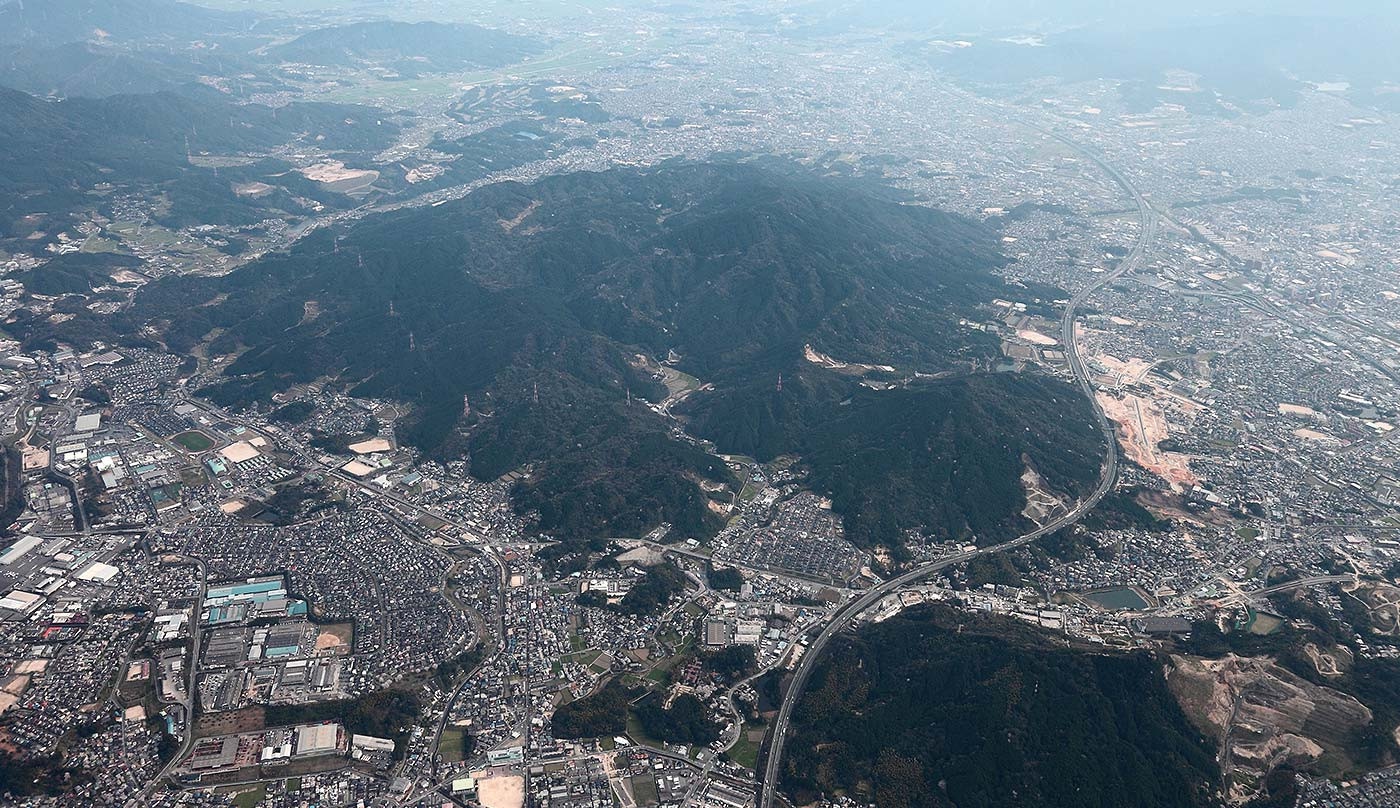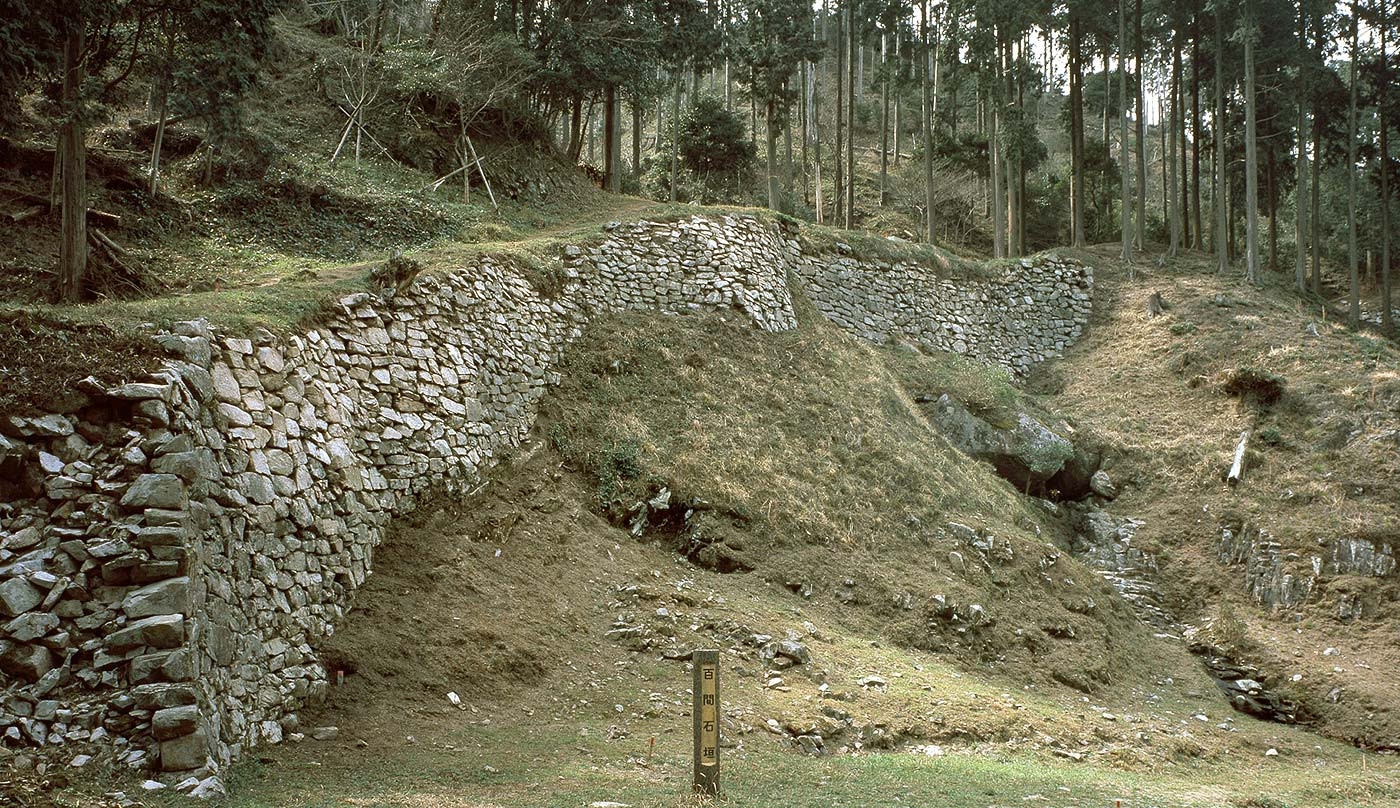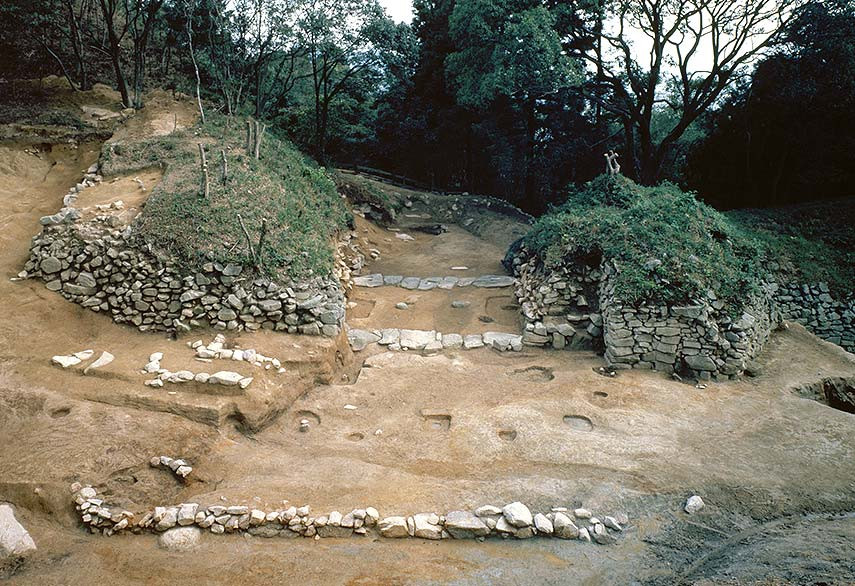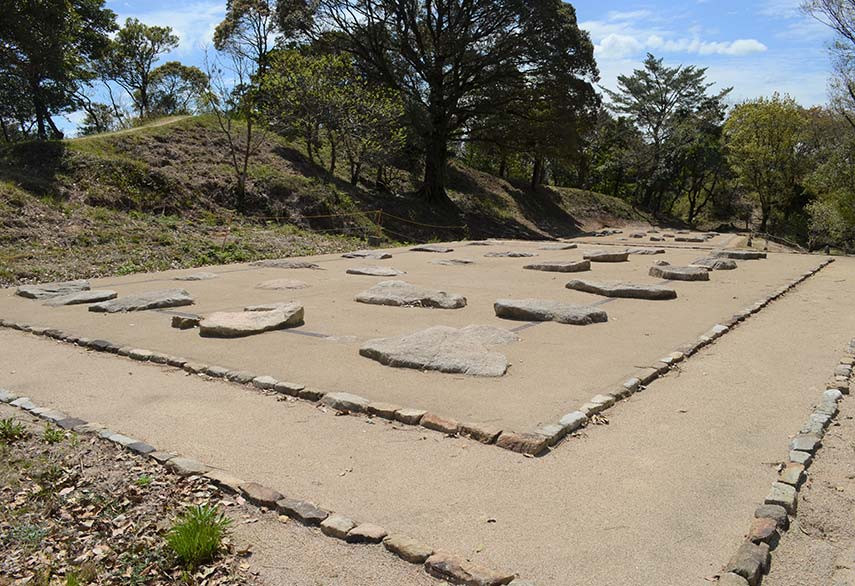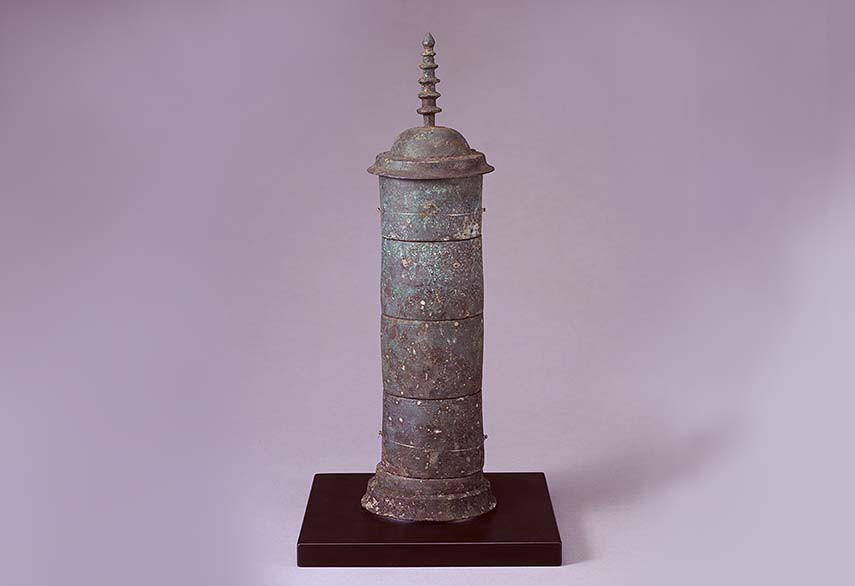
Ono-jo Fortress Ruins
| Location | City of Onojo・City of Dazaifu・Town of Umi |
|---|---|
| Designation | National Special Historical Site |
| Emblem |  |
This ancient mountain fortress was built 1350 years ago (665 AD) in cooperation with nobles who defected from the Baekje Kingdom (one of the ancient nations of the Korean Peninsula). The fortress was built to take advantage of a beneficial and natural landform. It is comparable to the Buso-Sanseong Mountain Fortress in Buyeo, the capital of Baekje, and shows us, along with the Mizuki Ruins and others, how Baekje Fortress would have appeared. Visitors to this site can enjoy panoramic views of Dazaifu and on clear days the view extends to the distant Genkai Sea.
One of the Largest Ancient Mountain Fortresses
Written of in the Nihon Shoki, this is one of the most ancient mountain fortresses in Japan and occupies an important place as a defensive base for the “Western Capital”. The fortress was built in 665 in preparation for invasion by Tang and Silla forces in the wake of defeat at the Battle of Baekgang in 663 on Mount Ono (commonly known as “Mount Shioji”), which towers behind the Dazaifu Government Office, and together with Mizuki Fortress, which blocks off the plains at the foothills of this mountain, strengthened fortifications on Hakata Bay. It is famous for being one of the largest ancient mountain fortresses, with a total of 8 km of earthworks and stone forts near the summit serving as the fortress walls. The remains of 9 gates, 70 buildings in 8 districts, and wells have been found within the fortress. The building ruins in particular are thought to mostly be warehouses for stockpiling rice, meaning they likely prepared not only for sieges but also for natural disasters and famines as well.
From the Mountain Fortress to a Mountain of Prayer and Faith
In 774, more than 100 years since the construction of Ono-jo Fortress, Shitenno-ji Temple (also known as Shio-ji or Shio-in Temple), a temple enshrining a statue of the Four Heavenly Kings, was built within fortress grounds to protect the country with the power of Buddhism, gradually transforming the mountain into a sacred place of worship. Since the Heian period, many sutra mounds have been constructed on the mountain, and prayers for peace have been offered. Moving into the Edo period, the 33 Stone Buddhas of Shio-ji Temple were built in 1800, making the area even more renowned as a mountain of faith. Bishamondo Temple is situated on the summit of Mount Ono, and currently visits to this temple are hosted every year on January 3, with many people climbing the mountain to the temple in the early morning.

Onojo City Characters/Ono Joe
When climbing from the foothills, there are two routes on the Onojo side of the mountain, the “Ono-jo Fortress Historic Path” and the “Ono Nature Path”, and there is also an observatory at the summit. We recommend taking in the panoramic views of the Fukuoka Plains and Hakata Bay from this observatory. It is believed that the main hall of Shitenno-ji Temple once stood near Bishamondo at the summit. A little way from here, you will find the Hyakken Stone Wall, Dazaifu Fortress Gate, Zochoten Cornerstones, and Obana Cornerstones.

Dazaifu City Characters/Tabito the Traveler, Otomo no Tabitto, Princess Reiwa
To tour the ruins of Ono-jo Fortress when coming from Dazaifu City, your best option is to take a taxi from Nishitetsu Dazaifu Station.
Drive up the forest road about 10 minutes to get to the Multipurpose Plaza (parking lot) on Shioji Mountain Pass. From here, walk a few minutes to see ruins that represent Ono-jo Fortress, such as Obana Earthworks, Dazaifuguchi Fortress Gate, Zochoten Cornerstones, Obana Cornerstones, and Yakigomegahara.
Midway along the forest road are the ruins of a medieval fortress, Iwaya Fortress. Use the free smartphone application “Dazaifu, the Western Capital” in the inner citadel to view in VR what the city of Dazaifu once looked like. (Compatible with iOS and Android)
*Dazaifu City Wi-Fi, a public Wi-Fi network, is available at the Multipurpose Plaza (parking lot) on the pass.

Umi Town Characters/Kusunoki-kun, Shakunage-chan
Roughly 80% of Ono-jo Fortress Ruins are within the town of Umi, where there is much to see, such as the Hyakken Stone Walls and the Zochoten Cornerstones. After construction of Shitennoji Temple in the Nara period, the mountain transformed into a place of worship and prayer. People come not only from the town of Umi but from the cities of Ono and Dazaifu to visit Shio-ji Bishamon-do. The ruins of Ono-jo Fortress (Mount Shio-ji) are loved by many to this day as a place with a long history.
Artifacts excavated from the Ono-jo Fortress ruins are on display at the Umi Museum.
Access Information
Address
Shioji Citizens Forest:811-2105 207 Shioji, Umi, Kasuya-gun, Fukuoka
By Train
About 70 min on foot from Nishitetsu Dazaifu Station
About 80 min on foot from JR Umi Station
By Car
From National Route 3, take Prefectural Route 60
From Prefectural Route 35, take Shioji Rindo Road from Dazaifu


About the Western Capital
The “Western Capital”, created in Tsukushi 1300 years ago. Cultural assets speaking to the magnificence of this city of international exchange that flourished in East Asia are scattered across the cities of Chikushino, Kasuga, Onojo, Dazaifu, Nakagawa, and Umi in Fukuoka Prefecture as well as the town of Kiyama in Saga Prefecture.

